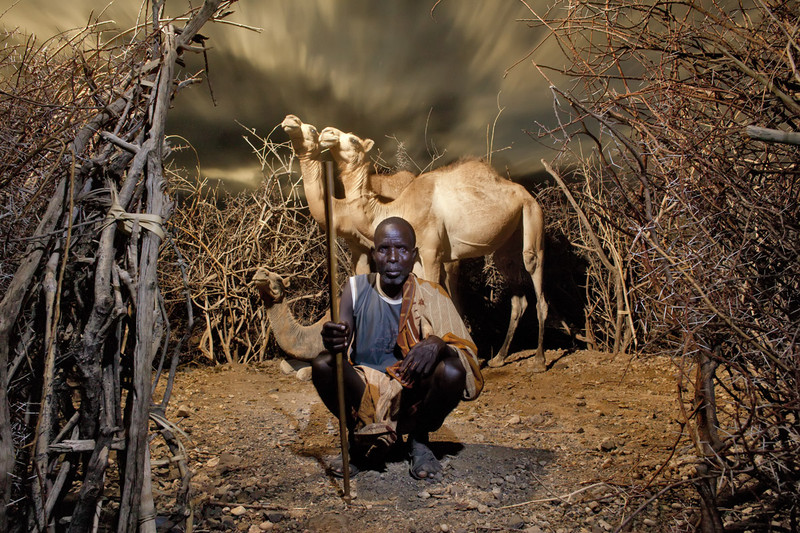Alejandro Chaskielberg’s moonlight photos: Too beautiful?

Judging from the comments on our Facebook wall, many of you liked the stunning new photos taken in Turkana, Kenya, by Alejandro Chaskielberg. The acclaimed Argentinian art photographer traveled to the region with Oxfam to take portraits of people affected by the recent East Africa drought and food crisis. Last week the photos were featured in a slideshow on BBC News, raising awareness of both the crisis and Oxfam’s ongoing response.
In most of the photos, Chaskielberg used his trademark technique of shooting by moonlight, illuminating these scenes of herders and their families with a dramatic, unearthly glow. The results are memorable (and newsworthy) because they’re so distinctive.
However, when we saw how the photos came out, some of my Oxfam colleagues loved them, but others gave them mixed reviews.

For one thing, as Chaskielberg explains, the moonlight photography technique requires subjects to hold their poses for extended periods of time. Because of this, some of the people in the photos look stiff and detached, standing motionless like wax figures in a museum. Maybe that’s not a problem in itself, but neither is it completely in line with the way Oxfam strives to portray people living in poverty—as active, empowered agents of change, rather than passive objects of our regard. When people don’t seem to move or act as we do, some of the human connection between viewer and subject gets lost, resulting in images that risk “exoticizing” the people portrayed.
Second, some felt the pictures were a bit too beautiful, given the situation. Is it OK to photograph families who have lost nearly everything, in the midst of the world’s biggest crises, looking like they’re part of a glossy spread in a fashion magazine? Does the artist’s technique—so much a part of these images—enhance the subject matter, or does it obscure it?

The latter is a tough question to answer, and one that Chaskielberg himself identified as his “main challenge” in his interview with the BBC. “I would like to break with the idea that a beautiful picture of a hurtful situation detracts from its message or documentary value,” he said. “My intention is to highlight a hopeful vision of the present, showing people’s strength and to inspire the viewer that a change is possible.”
So what do you think? Did he succeed? Or is there such a thing as a photo that’s just too beautiful?